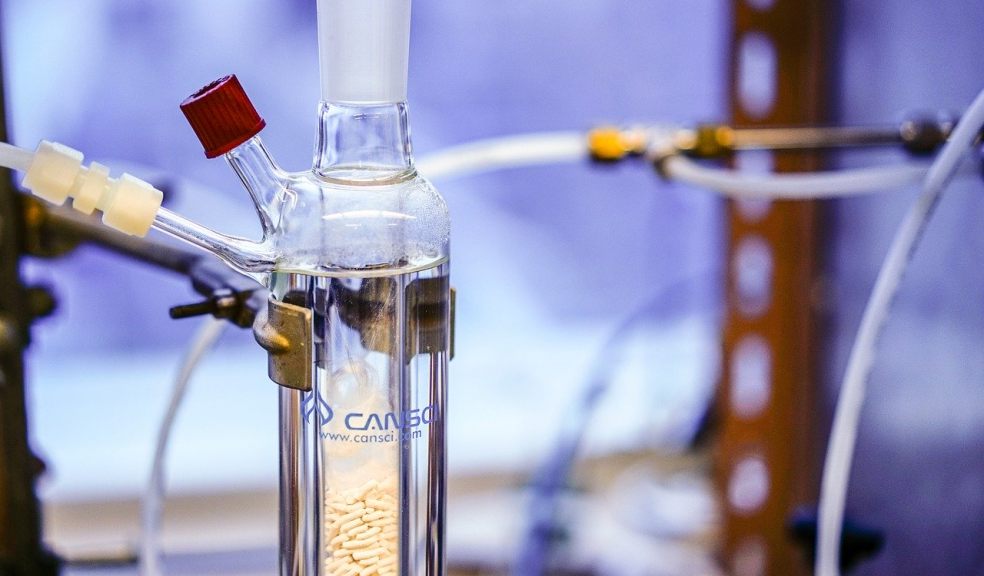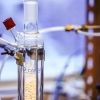
Protein purification methods
Thanks to specialised chromatography resins, protein purification is done in both a powerful and scalable manner. Thanks to their properties, resins allow for a much more convenient process of isolating desired proteins from a complex mixture.
Using the process development and scale-up, extraction resins with optimal properties for your target molecule will help you get the highest product purity, as well as optimal yields. To achieve this, you can choose from a wide range of resins with different functionalities, particle sizes, and base matrices available on the market. Each base matrix is usually also highly adaptable, regardless of the process scale you’ve decided to use.
The Protein Purification Process
When studying properties of specific proteins it’s necessary to identify each one you’re working on first. In order to do so, you have to start by isolating that protein from the sample you’re using. It can be an animal tissue, plant sample, or another complex mixture. That’s why choosing the right process to extract and purify the protein you’re targeting is essential for any such research.
There are various protein purification methods that laboratories use today. Which one you’ll end up using depends mostly on the nature of the protein you’re working on and the solution you’re using? One of the methods to extract a protein is to use a matrix of other protein molecules to capture the one you want. Another way to do this is to surround it with non-protein biological elements.
Depending on the intended purpose of the protein you’re targeting, you might need different amounts of it. If you plan to study it and analyse its properties, this kind of research will require just a small sample of the protein. In the case of industrial and commercial production, the quantities significantly increase, calling for different methods of protein purification.
Protein Purification Methods
As mentioned above, choosing the protein purification method you should use depends on many factors. These include how much of the sample size you need, the state of the protein mixture you’re starting with, as well as the purpose of this purification process.
Chromatography capitalises on the physical properties of the protein in question, as well as the other elements you may have in the solution you’re using. Regardless of the chromatography method, you’ll have to dissolve both the protein and its surrounding elements. This will create a mixture suitable for the method you plan to apply.
You can also employ one of the following protein purification methods:
- Fractionation techniques
- Precipitation techniques
- Electrophoresis
Fractionation techniques can involve centrifugation, filtration, sonication, and other techniques. These break up and remove any cell parts in the mixture you’re using. This applies both to parts surrounding and containing the protein you’re looking for.
To use precipitation techniques, you’ll have to add ammonium sulphate to the solution. As they precipitate, the protein samples will gather and concentrate. This method is suitable for extracting large amounts of protein.
With gel electrophoresis, you can identify denatured or non-natured proteins. You do this by passing samples through a gel matrix that’s electrically charged. The matrix will then be able to separate protein molecules by their molecular weight and pH value.
Purolite Protein Purification Resins
Purolite is one the major providers of various protein purification resins. Depending on your needs, you can choose from many functionalities, particle sizes, and different base matrices. Formulated to provide optimal yields and purity of your product, Purolite’s resins are also scalable to any type of process you may use.
When choosing a protein purification method to apply, keep in mind that Purolite resins are ideal for any of the methods listed below:
- Affinity chromatography
- Ion exchange chromatography
- Reversed-phase chromatography
- Solid phase extraction
- Adsorption
- HPLC resins, either supplied as bulk resin or pre-packed columns
Choosing the Right Protein Purification Method
When committing to a protein purification process, it’s extremely important to choose the right extraction method. You might be looking to extract a small protein sample for further analysis and research. Or you could plan an industrial-scale production of a specific protein.
That’s why it’s important to understand how different methods work and what yields you can expect. Choosing between different chromatography methods, adsorption, or any other type of protein purification process, will directly affect how much of the protein you can extract.

















